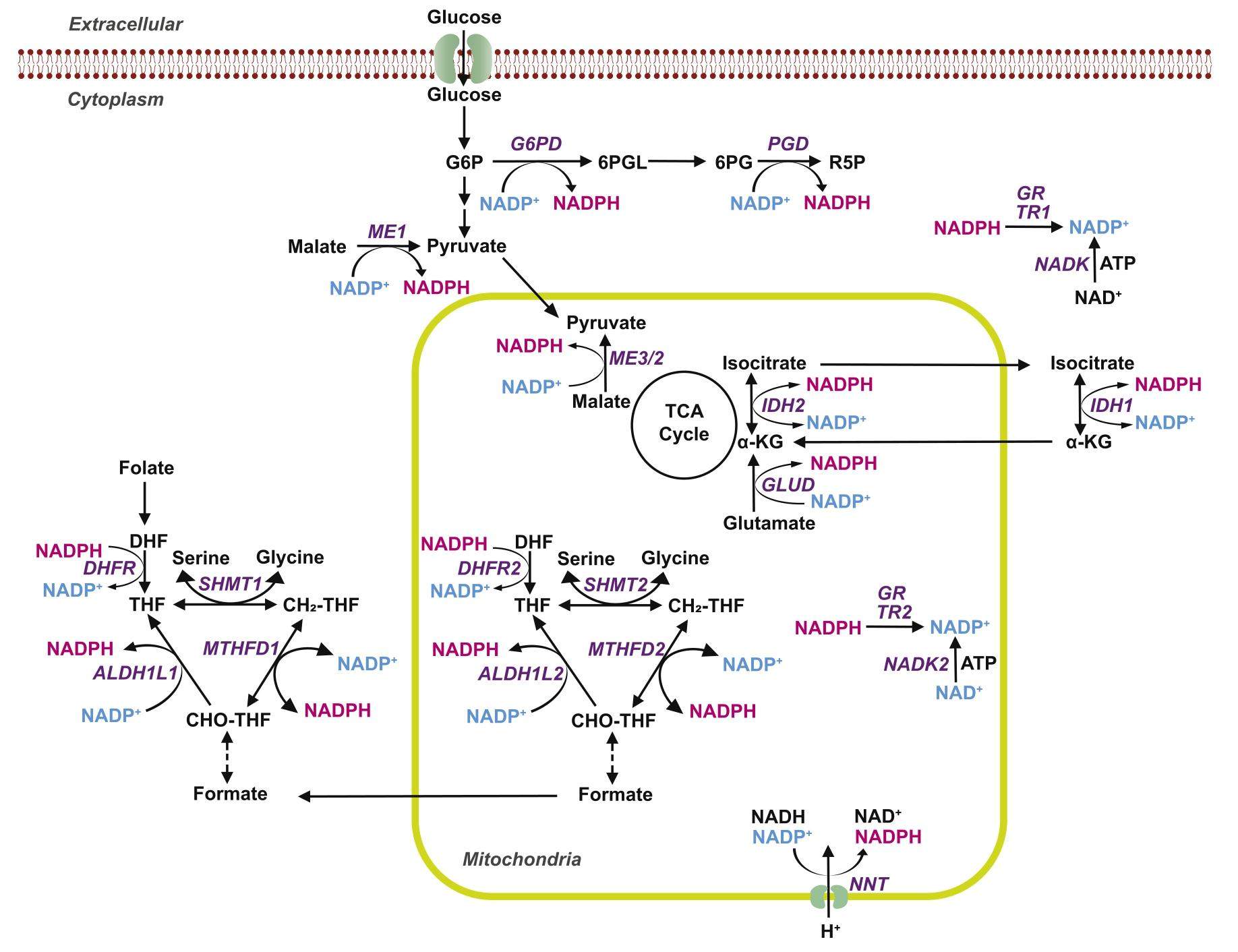
NADPH debt drives redox bankruptcy: SLC7A11/xCT-mediated cystine uptake as a double-edged sword in cellular redox regulation


Cystine/glutamate antiporter solute carrier family 7 member 11 (SLC7A11; also known as xCT) plays a key role in antioxidant defense by mediating cystine uptake, promoting glutathione synthesis, and maintaining cell survival under oxidative stress conditions. Recent studies showed that, to prevent toxic buildup of highly insoluble cystine inside cells, cancer cells with high expression of SLC7A11 (SLC7A11high) are forced to quickly reduce cystine to more soluble cysteine, which requires substantial NADPH supply from the glucose-pentose phosphate pathway (PPP) route, thereby inducing glucose-and PPP-dependency in SLC7A11high cancer cells. Limiting glucose supply to SLC7A11high cancer cells results in significant NADPH "debt", redox "bankruptcy", and subsequent cell death. This review summarizes our current understanding of NADPH-generating and-consuming pathways, discusses the opposing role of SLC7A11 in protecting cells from oxidative stresseinduced cell death such as ferroptosis but promoting glucose starvationeinduced cell death, and proposes the concept that SLC7A11-mediated cystine uptake acts as a double-edged sword in cellular redox regulation. A detailed understanding of SLC7A11 in redox biology may identify metabolic vulnerabilities in SLC7A11high cancer for therapeutic targeting.
